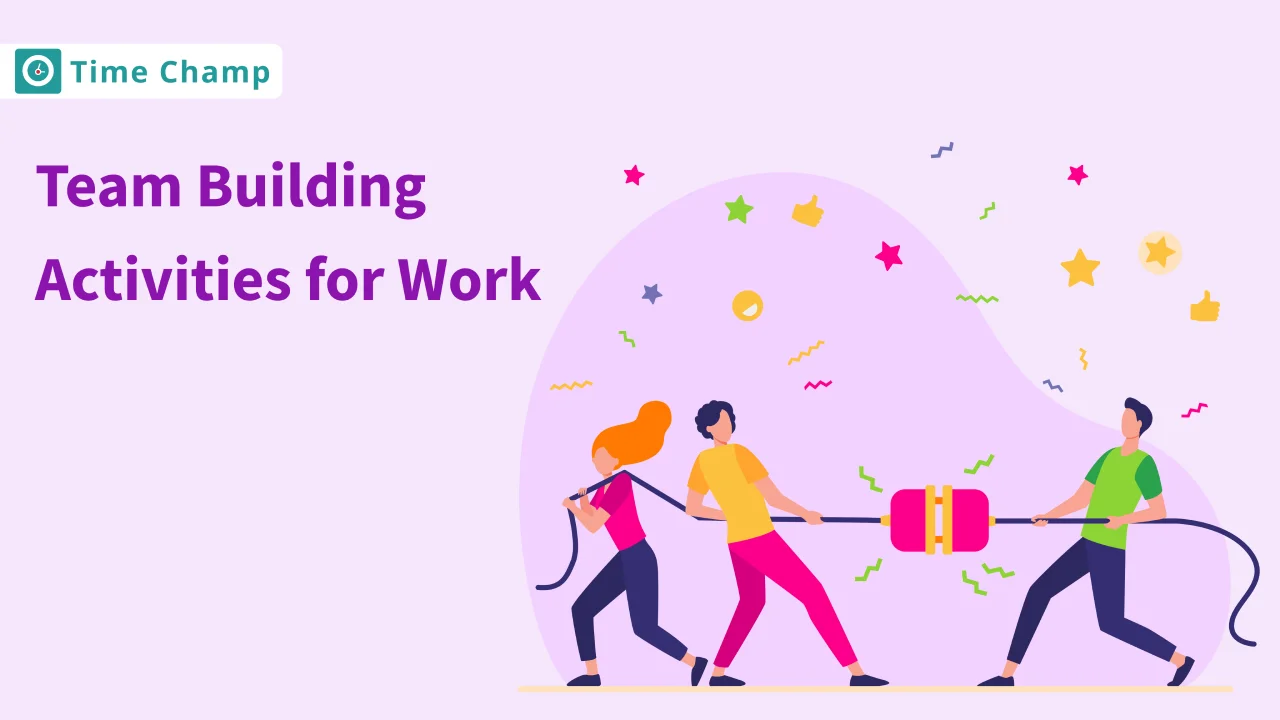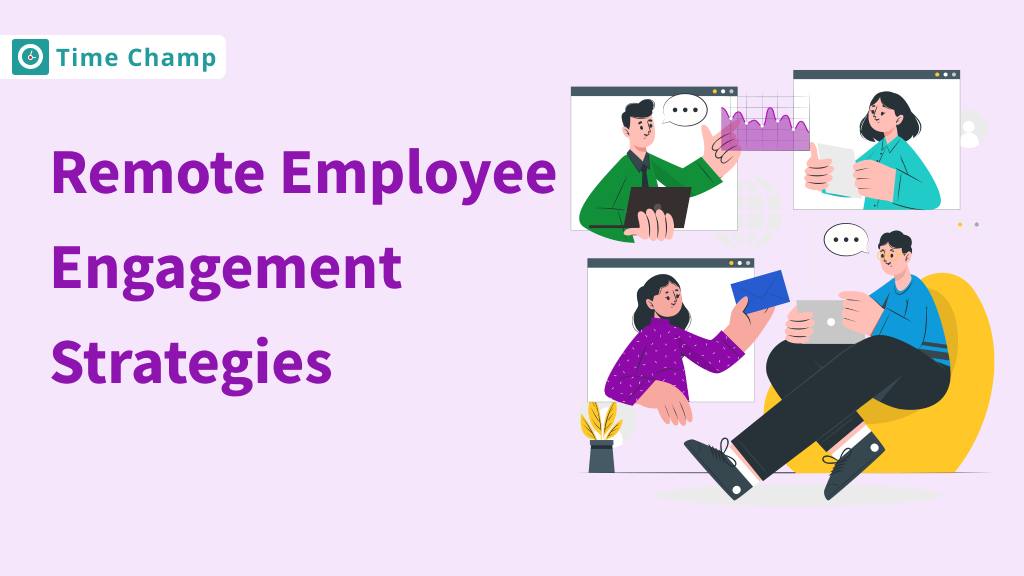In the industrious realm of modern workspaces, team building is the vital essence that ensures the corporate machinery operates at its peak. More than just trivial diversions, teambuilding activities are crucial in cementing the alliances between colleagues. The office landscape brims with a myriad of personalities and skills, and it’s through the deliberate application of teambuilding exercises that these variants are synthesized, forging pathways to improved communication, united efforts, unwavering trust, and ultimately, superior group solidarity.
The art of team building doesn’t adhere to a universal blueprint; it’s an intricate process, necessitating a selection of exercises that echo the specific nature and culture of an organization. Irrespective of a company’s stage of development, teambuilding programs are expertly crafted to merge individual proficiencies into a resilient structure.
Institutionalizing teambuilding initiatives stands paramount in crafting an environment where unity blossoms, where each member’s unique contribution is not just acknowledged but is central to the squad’s collective victory. In effect, team building is the archetypal practice of sculpting an unshakeable camaraderie within the workforce, propelling the enterprise along a trajectory of unified vision and enduring zeal.
Engaging in teambuilding activities is not a one-size-fits-all concept; it’s about selecting the right activities that resonate with the team’s unique dynamics and organizational culture. Whether it’s a start-up or a well-established entity, teambuilding endeavours are designed to weave individual strengths into a formidable tapestry that is resilient in the face of challenges, adaptable amidst change, and prolific in yielding results.
What Team Building Should Do?
Team building should act as a bridge, connecting individual aspirations with collective goals. It should replace isolation with integration, competition with cooperation, and ambiguity with clarity, ensuring that every member of the team is aligned and moving in unison towards shared objectives.
30 Effective Team Building Exercises
Team building is less about the individual activities and more about the journey a team takes toward achieving a higher level of understanding, collaboration, and trust. Here are 30 effective teambuilding exercises designed to bolster the team spirit at your workplace.
About Team Building Group Size
When it comes to team building, the size of a group plays a pivotal role in determining the nature and success of activities. It’s essential to curate experiences that cater to the team’s size, ensuring that everyone is involved and benefits from the exercise.
Purpose of Team Building Activities for Work
- Help You Stay on Track: Group activities should have a rhythm and reason. They align the team’s compass to the true north, ensuring that the company’s vision and mission are not lost in the daily grind.
- Define Responsibilities: Team building underscores individual roles within the teamwork framework. It underlines responsibilities, nurtures accountability, and amplifies the notion that each member is a vital cog in the organizational wheel.
Activities for Different Group Sizes
When designing team-building activities, it’s crucial to consider the diversity of group sizes:
- Small Groups: Intimate yet intensive exercises that promote deeper connections.
- Large Groups: Activities that foster inclusivity and ensure that no one is left on the sidelines.
5 Ice Breaker Games
- Time: 15–30 minutes
- Group size: 4–6
- Objective: Strengthen team bonds
Embark on a journey of discovery with this classic team building activity that challenges players to discern fact from fiction.
Initiate the engagement by inviting each participant to concoct two truthful statements and an imaginary one about themselves, all shuffled randomly.
Encourage teammates to employ their intuitive and analytical skills during team building exercises to identify the truths and uncover the falsehoods. Once guesses are made, the revealing moment arrives as the truth-teller discloses the invented fact.
This exercise is a staple in team-building activities, designed to not only amuse but to reveal deeper layers of each team member, thereby reinforcing connections and fostering a culture of camaraderie and understanding within the group.
1. Build a Storyline:
- Time: 15–30 minutes
- Group size: 4–10
- Objective: Boost creativity and reinforce team cohesion
Amongst a wide range of team-building activities, “Build a Storyline” is a distinctive one that propels your team to stretch their creative abilities. This collaborative story-crafting challenge prompts team members to contribute sequentially to a shared narrative, starting with a single given sentence.
The beauty of this team building exercise lies in its encouragement for collective imagination, enabling each participant to contribute their thoughts, weaving a rich tapestry of creativity. This method of interactive team building culminates with a group reflection on the tale spun together, offering a source of amusement as well as a clear display of the team’s unified creative force.
2. What’s My Name
- Time: 10–20 minutes
- Group size: Any
- Objective: Promote analytical thinking and team interaction
The team building activities “What’s My Name” adds an element of fun puzzling to the professional mix. With the identities of famous figures anonymously donned, participants engage in a lively session to deduce the names attached to their backs through strategic questioning. This role-guessing challenge is perfect for virtual or live settings and is a prime example of creative and interactive team building exercises that encourage members to problem-solve and connect within a light-hearted atmosphere.
3. Form the Order
- Time: 10–15 minutes
- Group size: 5–15
- Objective: Sharpen non-verbal teamwork skills
“Form the Order” is an inventive team building initiative where the power of non-verbal communication takes centre stage. Participants are called to silently organize themselves, relying wholly on gestures and visual cues to achieve a common goal—a task that beautifully encapsulates the essence of collaborative non-verbal team building exercises. It’s a straightforward yet insightful way to delve into the intricacies of unspoken teamwork, essential for enhancing harmony in any group setting.
4. Show and Tell
- Time: 20–30 minutes
- Group size: 5–10 per group
- Objective: Build personal connections within the team
“Show and Tell” transforms a traditional classroom experience into a meaningful team building activity. By inviting team members to share a personal item during a virtual gathering, this exercise breaks down virtual barriers, fostering a deeper understanding among colleagues. As individuals unveil personal stories tied to their chosen objects, this team-building exercise strengthens interpersonal connections, cultivating a supportive, empathetic work environment.
20 Team Building Activities
Here’s a list of 20 diverse team-building activities that cater to different group sizes, goals, and dynamics, ensuring that there’s always an exercise that fits the bill:
5. Scavenger Hunt
- Time: 1-2 hours
- Group size: 10-50
- Objective: Foster teamwork, quick decision-making>
Scramble your team’s detective skills with a fast-paced scavenger hunt. Divide into teams and hand out a list of items or clues to find within a set area or time limit.
Encourage teams to strategize and allocate tasks effectively for maximum efficiency in their pursuit. The ultimate goal is for teams to swiftly gather all items or solve the clues. The first team to achieve this emerges victorious. This exhilarating scavenger hunt is renowned for blending elements of teamwork, healthy competition, and adventurous challenges, making it an excellent addition to your team-building activities.
6. Escape Rooms
- Time: 1 hour
- Group size: 2-6 per room
- Objective: Enhance critical thinking, team dynamics through team-building activities
Lock teams into a themed room full of clues, puzzles, and hidden objects. The goal? Escape before time runs out.
Escape rooms demand communication, logic, and teamwork, making them an adrenaline-pumping exercise for enhancing team cohesion.
7. Cook-Off Challenges
- Time: 2-3 hours
- Group size: 5-20
- Objective: Encourage collaboration, creative thinking via team-building activities
Stir the pot with competitive cook-offs. Break your team into small groups, assign the same ingredients, and let the culinary creativity unfold.
Whether it’s crafting the best dish or a full-course meal, teams must work in unison to plate up success, seasoning their teamwork skills in the process.
8. Volunteer Days
- Time: Half or full day
- Group size: 10-100
- Objective: Develop empathy, corporate social responsibility through team-building experiences
Give back to the community and strengthen your team’s social bond by volunteering together.
Whether it’s planting trees, building homes, or serving at a soup kitchen, shared acts of kindness can bridge gaps and build lasting camaraderie.
9. Company Picnics
- Time: Half or full day
- Group size: Any
- Objective: Strengthen informal bonds, relaxation
Partake in a team building company picnic at a local park or retreat. Incorporate team activities like tug-of-war and sack races or engaging sports such as volleyball to infuse fun and foster physical engagement.
These relaxed settings serve as ideal team-building activities, allowing team members to witness a more personal side of each other.
10. Skill Swap Workshops
- Time: 1-2 hours
- Group size: 5-30
- Objective: Skill-sharing, team empowerment
Harness the hidden talents within your team with a skill swap session. Let team members lead short workshops on their areas of expertise or hobbies, from coding to cookie decorating.
It’s a fantastic way to appreciate the diversity of skills within your team and learn something new.
11. Sneak Peek
- Time: 1-2 hours
- Group size: Any
- Objective: Promote transparency, cross-functional awareness
Bring team projects into the spotlight with a ‘sneak peek’ session. Allow team members to present ongoing work or completed projects to the rest of the team.
This team-building activity cultivates organizational transparency and nurtures a culture of knowledge-sharing among team members.
12. Office Makeover
- Time: 2-4 hours
- Group size: 10-50
- Objective: Enhance creativity, sense of ownership
Engage in a team building office makeover, collaborating on transforming a shared office space. Empower the team to select new decor or rearrange furniture, fostering a sense of investment in the workplace and significantly boosting morale.
These team-building activities offer a constructive platform for establishing connections within the work environment and among team members.
13. Film Festival
- Time: 2-3 days (prep + event)
- Group size: 10-100
- Objective: Foster creativity, presentation skills, and team-building activities
Host an office film festival as a team-building endeavour. Teams work on scripting, shooting, and editing short films before showcasing them in an Oscars-style ceremony.
This immersive team-building activities demands a fusion of creativity, logistical planning, and the ability to operate under tight deadlines—essential business skills in a collaborative setting.
14. Board Game Tournaments
- Time: 1-3 hours
- Group size: 4-40
- Objective: Strategic thinking, cooperation and team-building activities
Promote strategic thinking and teamwork with a team building board game tournament. Select games that require collaborative decision-making and strategic prowess, providing an opportunity for team bonding over dice rolls and game spaces.
15. “Shark Tank” Pitches
- Time: 1-2 hours
- Group size: 10-50
- Objective: Nurture creativity, pitching skills and team-building activities
Put your team’s innovative thinking to the test with a “Shark Tank” style pitching session. Teams develop a product or service idea and present it to a panel of judges who will decide on the feasibility and creativity of each pitch.
16. Treasure Hunt
- Time: 1-2 hours
- Group size: 10-100
- Objective: Enhance team spirit, problem-solving and team-building activities
Organize a thrilling treasure hunt that takes teams across your office or campus deciphering clues and solving riddles to find a hidden ‘treasure’. This activity is great for large groups and can help break down silos as departments mix in the thrill of the hunt.
17. Blind Retriever
- Time: 30-45 minutes
- Group size: 10-20
- Objective: Trust-building, effective communication and team-building activities
Pair up team members and blindfold one partner. The unblindfolded guide must direct their partner to retrieve objects from around the room or office using only their voice. This requires trust and clear communication, as well as patience and careful listening—key components of effective teamwork.
18. Balloon Questions
- Time: 15-30 minutes
- Group size: Any
- Objective: Encourage team reflection, foster discussions and team building
Write down thought-provoking questions on slips of paper and insert them into balloons before inflating. Teams pop balloons to find and discuss the questions inside, sparking engaging conversations and deeper team connections. These team-building activities can surface valuable insights and perspectives, strengthening team understanding.
19. DIY Craft Challenge
- Time: 1-2 hours
- Group size: 10-50
- Objective: Foster innovation, time management and team-building activities
Task your team with creating something out of limited resources, such as building a bridge out of straws or a tower out of paper. This is a great hands-on activity for highlighting the importance of resourcefulness and time management, as well as innovation under pressure.
20. Group Jigsaw Puzzle Race
- Time: 30-60 minutes
- Group size: 2-10 per team
- Objective: Teamwork under time pressure and team building
Choose large, complex puzzles and have teams race to complete them first. This requires coordinated effort, patience, and the ability to stay calm under the stress of a ticking clock. It’s ideal for small groups and enhances teamwork and shared problem-solving approaches.
21. Vision Board Creation
- Time: 1-2 hours
- Group size: Small groups within larger teams
- Objective: Goal setting, fostering creativity and team building
Equip your team with magazines, glue, and poster boards to create a visual representation of their collective goals and visions for the future. These team-building activities not only hone creative skills but also align the team on shared ambitions and dreams, fostering team unity.
22. Office Sports League
- Time: Varies (Regularly scheduled games)
- Group size: Any
- Objective: Build team spirit, encourage healthy competition and team activities
Establish a sports league within your office with teams representing different departments or individual office branches. From soccer to table tennis, regular matches can foster a sense of camaraderie and are a great way to keep the team active and engaged.
23. Story Circle
- Time: 30-60 minutes
- Group size: 5-20
- Objective: Develop empathy, listening skills
Gather around in a circle and share personal stories related to a chosen theme. This can range from work-related successes to childhood memories. As each person shares, empathy and understanding within the team can deepen, forging stronger connections.
24. Business Simulation Games
- Time: 2-4 hours
- Group size: 10-50
- Objective: Cultivate business acumen, strategy formulation
Dive into the world of business simulations where teams form ‘companies’ facing market challenges. Each team makes decisions about production, marketing, human resources, and more, competing against each other for market share. Such simulations foster a practical understanding of business dynamics and decision-making.
5 Virtual Team Building Activities
In the digital age, remote working has become the norm, and virtual team building has assumed heightened importance. Here are five activities perfectly suited for remote teams:
26. Virtual Happy Hour: Strengthening Remote Team Dynamics
- Time: 30–60 minutes
- Group size: 5–100
- Objective: Social bonding, relaxation
The Virtual Happy Hour stands out as a beloved team-building activity for remote teams looking to decompress and bond after a week of work. By utilizing video platforms like Zoom or Skype, you can create a laid-back environment where colleagues can share a laugh, toast with their beverage of choice, and engage in a virtual celebration that builds camaraderie. It’s a prime way to foster relationships and reinforce the social fabric that’s vital to team building.
27. Online Gaming Competitions: A Digital Team Building Sports Day
- Time: 30-90 minutes
- Group size: Any
- Objective: Team bonding, strategic thinking, competitiveness
Gathering your team for Online Gaming Competitions is an innovative way to encourage team building through the spirit of healthy competition. Select multiplayer games that necessitate collective strategy such as MMOs, battle royales, or team-based puzzles. This particular form of digital team building serves not just as leisure but as an exercise in sharpening teamwork and decision-making, enhancing skills crucial to professional teamwork environments.
28. Virtual Office Tours: Exploring Personal Workspaces
- Time: 10–15 minutes per person
- Group size: 3-30
- Objective: Enhance familiarity, personal connection
Virtual Office Tours are a more intimate and personal team-building exercise ideal for remote teams. Each team member gets a turn to guide the rest through their individual workspaces, adding a personal story or sharing items of significance. This activity fosters a stronger team culture by allowing colleagues a glimpse into each other’s personal work sanctuaries, turning individualistic remote work setups into shared team-building experiences.
29. Remote Team Lunches: Cultivating Inclusivity and Unity
- Time: 45-60 minutes
- Group size: Any
- Objective: Team cohesion, sharing, cultural exchange
Remote Team Lunches are a delightful, culturally rich team-building exercise that unites the team over a communal activity – eating. By synchronizing lunch times and hosting a virtual meal over video call, and perhaps theming the cuisine, this shared experience promotes inclusion and a sense of unity, translating the traditional lunchroom conversations into a digital format that supports team building.
30. Virtual Book Club: Fostering Continuous Learning
- Time: 1 hour
- Group size: 4-20
- Objective: Personal growth, insight sharing, communication
The Virtual Book Club is more than a gathering for book enthusiasts; it’s a strategic team-building activity that facilitates continuous learning and communication within the team. By selecting books that reflect the company’s core values or professional goals, the discussions that follow allow for a deep dive into diverse perspectives, stimulating personal and professional enlightenment. This sharing of insights is emblematic of the thoughtful exchange that such team-building activities aim to achieve, contributing to a well-rounded and connected team.
Advantages of Incorporating Team Building into Corporate Culture
- Enhanced Communication Through Team Building: Corporate team-building activities act as bridge-building exercises that foster open and effective communication channels among employees. They break down formal and informal barriers, encouraging dialogue that is honest and transparent.
- Strengthened Relationships via Team-Building Initiatives: Immersive team-building exercises promote camaraderie and establish a culture of trust. This, in turn, weaves a strong network of relationships that form the very fabric of a resilient and tight-knit team.
- Increased Productivity from Aligned Team-Building Efforts: Structured team-building activities finely tune the coordination between team members, which enhances the overall workflow. By aligning team efforts, defining roles clearly, and optimizing processes, productivity within the group escalates.
- Creativity Boost with Team Building Challenges: Team building provides a platform for individuals to step away from their typical work environment and engage in activities that spark creativity. Returning to tasks with these fresh creative insights often leads to innovative ideas and solutions.
- Stress Reduction via Engaging Team-Building Activities: Team-building activities offer a much-needed reprieve from the daily grind, serving as an outlet for stress relief. Through these enjoyable engagements, employees can mentally and emotionally recharge, bringing renewed energy to their roles.
- Conflict Resolution Through Team-Building Scenarios: The scenarios enacted during team-building exercises are unique opportunities for teams to navigate through conflicts. These moments become practice fields for honing the art of conflict resolution – a skill essential in any workplace.
- Leadership Skills Cultivation via Team-Building Roles: Team-building activities are breeding grounds for future leaders. Through leading and decision-making roles within these exercises, hidden leadership qualities come to the fore, aiding in the cultivation of the next generation of organizational leaders.
- Enhanced Problem-Solving Skills from Team Building Tasks: Through collaborative problem-solving required in team-building exercises, teams sharpen their strategic thinking and solution-finding skills. Such activities simulate real-life business challenges, enabling teams to better navigate complex workplace issues.
In summary, integrating team building and team-building activities into corporate strategy not only drives team effectiveness but also plays a critical role in developing a company culture that values cooperation, innovation, and shared success.
Conclusion
In reinforcing the lattice of our organizations through thoughtfully chosen team-building activities for work, we create a more integrated, communicative, and productive workforce. Embracing these team-building activities means valuing the most significant asset of any company: its people. As we look to foster a healthy, vibrant, and synergistic workplace environment, let’s not overlook the power of well-crafted meeting agendas and templates. Efficient meetings are the hallmarks of a well-oiled team and can be the difference between an idea that falls flat and one that soars. Intelligent meeting management, just like effective team building, can drastically improve team dynamics and outcomes.
To explore reliable and user-friendly systems for crafting agendas and organizing meetings, consider browsing resources like Time Champ, which offers practical tools for maximizing productivity within your teams. As we close this comprehensive guide on team building, remember that the activities are not merely tasks; they are the foundational stones for building an enduring and thriving workspace centred around effective team building. So, whether online or in-person, small groups or large, initiate these team-building endeavours and watch as they transform the landscape of your professional realm.
FAQs on Team Building Activities for Work
In a team building activity, you’d engage with your colleagues in exercises designed to enhance communication, collaboration, and trust. You might solve puzzles, participate in group discussions, or undertake collaborative tasks.
On teams, you can participate in virtual activities such as online games, group classes, or web-based escape rooms. Even remote teams can enjoy icebreakers, collaborative tasks, and shared learning experiences.
Work activities refer to the tasks and responsibilities that are part of an employee’s role. They can also include organized group efforts for team building, such as workshops, brainstorming sessions, and recreational outings
Team-building activities encourage participants to express ideas, listen actively, and relay messages clearly in a fun, non-threatening environment, thereby fostering better communicatio
Absolutely! Team building can highlight individuals who take initiative, guide others, and exhibit problem-solving skills, all of which are indicators of leadership potential.
Virtual team-building activities leverage digital platforms for collaborative tasks and games that remote teams can participate in, promoting team unity and engagement.
Quick activities for small groups include ice breakers like “Two Truths and a Lie,” “Office Trivia,” or a rapid problem-solving challenge
For large groups, organized events like scavenger hunts, sports days, or role-playing exercises work well to involve everyone.
Yes, activities like cooking challenges, language learning games, and competitive brain teasers combine fun with educational elements.
The frequency can vary based on the team’s needs, but periodic sessions, such as quarterly or bi-annually, help maintain team spirit and cohesiveness.







